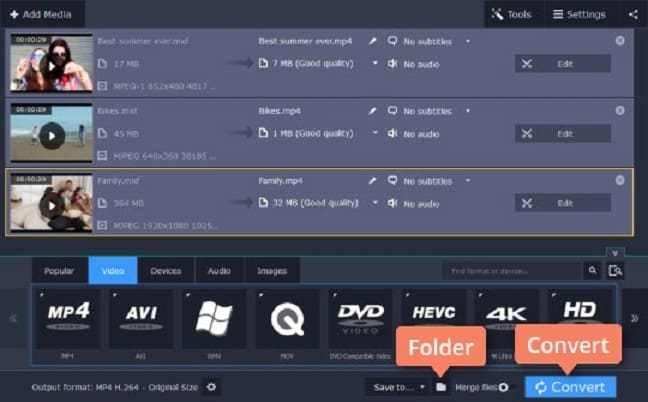Many healthcare professionals nowadays have started to create videos as a way to advertise their services, provide useful advice, or build up a social media following. One of the aspects of video creation that you may have difficulty with however is choosing a format when you export your videos.
Video Formats: Containers and Codecs
Many people aren’t aware that the ‘format’ of a video actually has two parts: A container and a codec.
The container is the wrapping that holds together the video data and is easily recognized by the extension of the video, i.e. MKV, MP4, AVI, and so on. It also determines the additional features that may be in the video, such as subtitles, menus, and so on.
The codec, however, is the part that arranges the data and determines the compression that is used. Some of the more popular codecs nowadays include H.264, H.265 (HEVC), and MPEG-4.
When you choose a format you need to select both a container and codec – as they work as a pair.
“How Will The Video Be Used?”
If there’s one question that you should ask yourself when you want to choose a format for a healthcare video, it is the one above: How will it be used?
To break it down, depending on how the video will be used you will approach your choice differently:
-
Upload to social media or other online platforms
If you want to upload your video to social media or any other online platforms, you should try to look up the recommended format and settings for that platform. For example YouTube’s recommended format is MP4 with H.264.
By exporting your healthcare video using the recommended format, or through a free mp3 converter, you can ensure that there are no issues involving the format when you upload it. You may also want to check out this Mac YouTube downloader as well.
-
Distribute manually or store for personal use
In other cases where you intend to distribute the video manually or store it for personal use there are two factors you need to consider: Compatibility and compression. Newer video formats have better compression, but are not as widely supported.
If you’re going to be distributing the video to a large group of people, compatibility is key and opting for MP4 with H.264 is a good option. However if you’re not and your devices support newer formats, you could try MKV with H.265 to conserve space.
It is worth noting that all the above applies to videos in other formats that you may want to upload online or distribute through other means. In fact if you have videos of any kind in obscure formats you should definitely consider transcoding them. For example you could use something such as a Movavi Video Converter to convert videos between formats.
As you can see choosing the ‘right’ format for healthcare videos isn’t that difficult when you approach it from this angle. Just remember to be aware of both the container and codec that you’re using when you export your videos and save them.
The Editorial Team at Healthcare Business Today is made up of skilled healthcare writers and experts, led by our managing editor, Daniel Casciato, who has over 25 years of experience in healthcare writing. Since 1998, we have produced compelling and informative content for numerous publications, establishing ourselves as a trusted resource for health and wellness information. We offer readers access to fresh health, medicine, science, and technology developments and the latest in patient news, emphasizing how these developments affect our lives.








